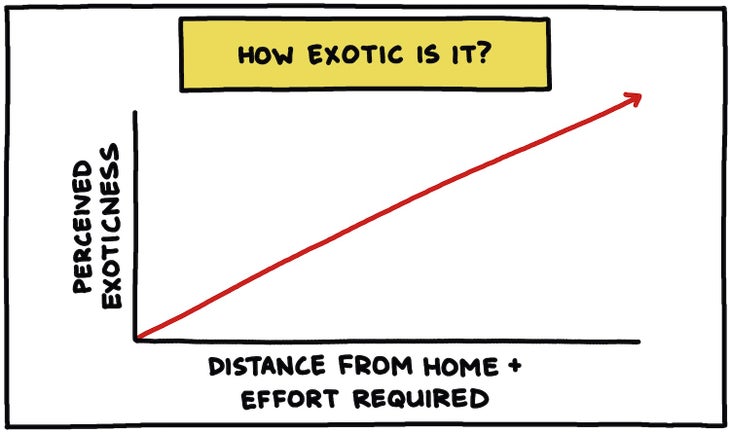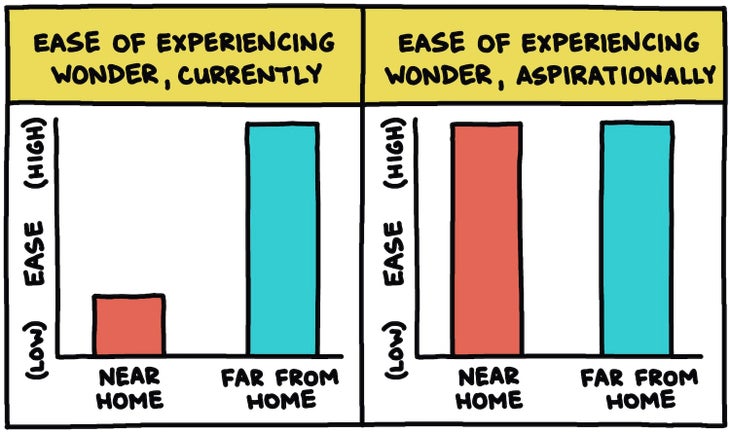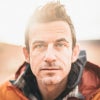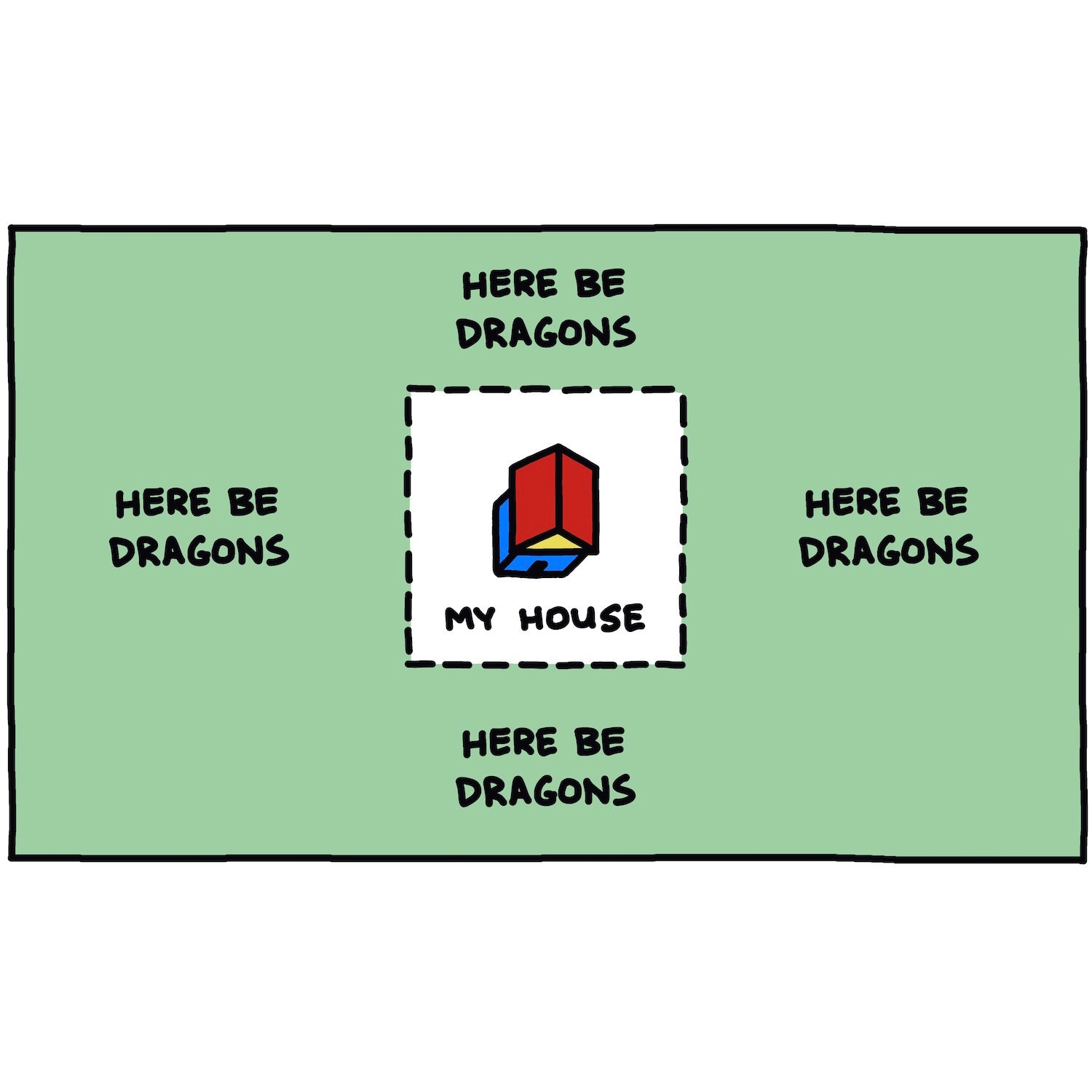I have run and bicycled a certain one-mile section of the paved riverfront multi-use path in my hometown probably at least 200 or 300 times. A handful of times, I have thought to myself, “I should really stop and read some of these historical plaques along the trail.” I believed there to be two or three of them, and in four years, I never made the minuscule effort to pull off the trail even once for the 60 to 90 seconds required to read them.
A few weeks ago, though, I finished reading what I think is now one of my favorite adventure books, and I got inspired. Because books can do that.
Dean Karnazes’s Ultramarathon Man inspired hundreds or thousands of people to try ultrarunning, Colin Fletcher’s books inspired probably thousands of people to take up backpacking, and Cheryl Strayed’s Wild inspired a generation of thru-hikers. My friend Alastair Humphreys’ new-ish book was the catalyst for one of the least epic, but most satisfying adventures of my recent life.
The book is called Local: A Search for Nearby Nature and Wildness, and the concept is this: A guy who lives in the suburbs of London looks for adventure on the 400-square-kilometer map with his house in the center. This particular guy has bicycled 46,000 miles around the world for four years, rowed a boat across the Atlantic Ocean, and walked across the Empty Quarter Desert towing a giant homemade cart. It’s no Into Thin Air, or story of survival in Antarctica, or tale of the first human forays into some unexplored corner of Earth. But Al got this map, decided to spend a year essentially “staying home,” exploring one randomly-selected square kilometer per week, whether or not it looked interesting on the map.
Here is one of my favorite paragraphs in the book, on page nine:
“What if where I live, this bog-standard corner of England, which had held no surprises for me, was actually full of them, if I only bothered to go out and find them? Not known, because not looked for. This was an opportunity to get to know my place for the first time and to search closer to home than ever before for things I’ve chased around the globe: adventure, nature, wildness, surprises, silence and perspective.”
I imagine having to write a book about the experience pushed Al to try to dig up interesting things about each grid square he explored—which, in my reading, often resulted in me looking up from the book and saying to Hilary, “Did you know …” And it reminded me of some of the best tour guides I’ve met on trips, who remain enthusiastic after repeating the same facts and figures hundreds of times—or my sister-in-law’s father, John, who has lived in the same town in Wisconsin for almost his entire life and seems to have a million pieces of local trivia ready at all times. And how last year I traveled to a spot very close to my hometown’s , but still hadn’t read the goddamn signs on the riverfront path I’m on five times a week.
So Tuesday morning, after riding my bike to drop off our little guy at daycare, I pedaled down the section of path I’ve traversed so many times on foot and on skinny tires, and I stopped at every single plaque. There are 10 of them in the span of that one mile, detailing the human and geologic history of the valley here dating back 16,000 years: the lumber baron who built a mansion near the mouth of the creek (and whose widow, more notably, donated the land for the city’s first park), the bridges that washed away in floods, the glacial lake that flooded and carved out the valley several times in “one of the most significant geological events in the history of the world,” and did you know we used to have a streetcar here? I mean, I guess not really “we,” but the people who lived here a century ago.
Several years ago, at an American adventure film festival, I saw a film of an expedition to climb a mountain in a country halfway around the world. In one scene, as the team of climbers slogged onward and upward through the jungle under ridiculously heavy backpacks, they passed through a village and a few local children and adults watched them. The characters in the film were of course far from home, very “out there” in many ways, and struggling against great odds for a goal and a story about trying to reach that goal. But to the people who lived in the village, it was just Wednesday. Maybe a notable Wednesday, since these weird people with colorful clothing and backpacks were passing through, and that didn’t happen every Wednesday. But I found myself thinking more of the contrast: Eight people having a capital-A adventure within ten feet of other people sitting in their front yards. Which is something that never happens in my neighborhood, because people don’t fly halfway around the world to climb the mountains near my house.

But should you have to spend several days and thousands of dollars traveling to have an interesting experience? Seems a little elitist, doesn’t it?
My friend Forest and I have spent time together in many beautiful places, usually as photographer (him) and writer (me). I have picked up a handful of camera tricks from him over the years, but have no illusions about switching careers to photography. I asked him one time to tell me how I could improve my photography, based on what he’d seen, and he gently suggested that I should try to get closer. Of course he was right—I always default to the “tiny person in huge landscape” shot, which is easy for me to see and feel (we’re so small out there!), but hard to replicate without a long lens. Being able to look closer, to zoom in, is something I still struggle with, literally in photography and metaphorically in life. Isn’t it harder to experience wonder the closer you are to where you live and work and get stuck in traffic and take out the trash, or is that just me? I aspire to be someone who can find wonder anywhere.

I’m not saying that reading a handful of plaques has now made me some sort of expert. But it did send me to the library, and to Google some things—which I wouldn’t have Googled without having my interest piqued by what was on those plaques (the environmental disaster behind the old dam) and what was not on those plaques. (Okay, but what about the history of indigenous people in this area?) Which is something we are lucky to have the ability to do nowadays, to follow up on our interest(s) .
Another paragraph from the introduction of Local:
“I’d imagined this would be a year of poking around rabbit holes in the countryside, but it became a year of falling down internet rabbit holes about hundreds of obscure topics, as well as reading dozens of books about history, nature, farming, and the climate emergency. Anything clever you read in the following pages, and almost every fact and figure, was new to me when I began this book. Do not make the mistake of thinking I’m a clever person who can stand in an empty field and see biology, geology, and every other ’ology, while you merely see a field. I, too, saw only the fields before I started, but paying close attention unveiled so much.”
Of course I love to travel, and some of my favorite places in the world are special because the first time I visited, a friend who lived there showed me around. And tour guides are great, but nothing beats someone who is enthusiastic about where they live, because they’ve paid attention to it and don’t mind sharing it with someone else. Now if you’ll excuse me, I have to do some research on this streetcar we used to have here in the early 1900s, so I can tell visiting friends about it for the next decade.
If you’d like to read Local (which has been longlisted for the Wainwright Prize!), here’s where you can find it:
������


